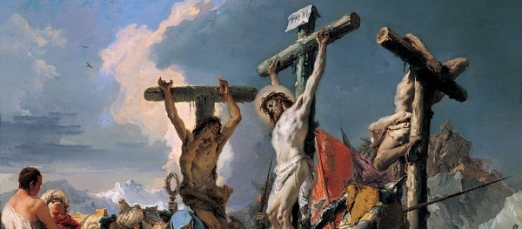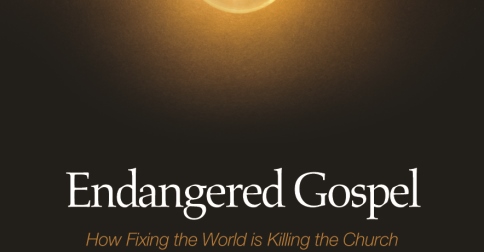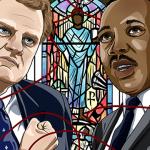
My friend Tato Sumantri, of Church of the Servant King in Eugene, Oregon (which incidentally hosted one of the Slow Church events that John and I did in the Pacific Northwest in June) recently sent me an email with a couple of very thoughtful questions about the Slow Church book. This is the second and final post in response to Tato:
[ AND HERE is Tato’s first question on Sin and Repentance ]
“What does Jesus have to do with any of this [in the Slow Church book]? What is preventing a slow church movement from being just another sociological phenomenon, like the slow food movement? We are Christians, and as such are first and foremost disciples of Jesus. The church is the body of Christ. However you choose to interpret that, no one within mainstream Christianity denies that assertion. This means that whatever we do, particularly within the context of being the Church has to source back to the Christ event, my short hand for the life, teachings, death and resurrection of Jesus. How is slow church a more faithful way of living out the Beatitudes? How does slow church more faithfully reflect the Carmen Christi of Philippians 2? How is slow church more cruciform? Throughout the book, you make glancing blows at a number of points of cruciform and embodied faith (my lingo) but never really drive very deeply into those issues. My concern is that unless what you are doing is rooted in the Christ event, it is merely one among many hip millennial movements.”
The primary question that we are tackling in the book, is how do we more deeply and faithfully embody Christ in our church communities? So, while the book might not compare well with most Contemporary Christian Music on the Jesus-Per-Minute scale (sorry, bad joke), we do feel it is deeply Christological. One of the main keys is the patience chapter, which adamantly insists that we not only desire the ends that Jesus desires, but that we pursue them in the WAY that he did. If that’s not cruciformity, then I don’t know what is. The way of Jesus as we see it depicted in the Gospels, the Carmen Christi, etc. is first self-denial and then preference for the other. This pattern is repeated over and over throughout our book in many different forms: e.g., deny the selfish ambition that comes from pursuing numbers, rather devote yourself to the hard work of helping others to grow deeper; deny the selfish wanderlust that uproots us from places, rather demonstrate fidelity and care for neighbors in a particular place; deny the sloth that wants to see things done without work, rather devote yourself to the care of your sisters, brothers and neighbors; deny the selfish fears that we might not have enough resources, rather act gratefully for God’s provision and share abundantly with others.
In contrast to some of the things that have been written about our book, John and I are insistent that Slow Church is NOT a movement (in the sociological sense), but rather a conversation, specifically a conversation about how our church communities can follow more faithfully in “the patient way of Jesus.” (The book’s sub-title is not just empty posturing, it describes our desire to bear witness to Jesus, not to some sociological movement). Without Jesus, there is surely no Slow Church – or any church, for that matter. Our friend Phil Kenneson has rightly said that “Slow Church is just another name for plain old church.” We emphasize the slowness because that is what we need in a culture driven by McDonaldization, but Phil is absolutely right that all we are calling people to is to a deeper life together as the Body of Christ. Our success as churches will be measured by the faithfulness of our embodiment of Jesus, and on every page of the book, we call the readers to deeper faithfulness… in their church communities (because as I’m sure you would agree, there is no Christian faithfulness apart from the body of Christ).
















